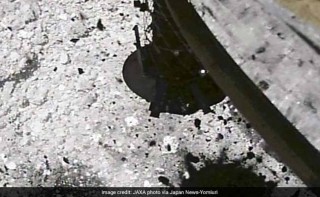Loading
Search
▼ Japan Space Probe Lands On Asteroid, Space Agency Releases Pics, Video
- Category:Event
Hayabusa2 lands on asteroid Ryugu: The images, released Tuesday, show sand and rocks flying up after the probe fired a bullet into the asteroid to collect samples.
The Japan Aerospace Exploration Agency (JAXA) has released photographs and video showing its space probe Hayabusa2 touching down on the asteroid Ryugu.The images, released Tuesday, show sand and rocks flying up after the probe fired a bullet into the asteroid to collect samples. The probe is scheduled to make the first-ever attempt to create a crater on the surface of an asteroid in early April, then make a second landing near the crater in May or later.
Hayabusa2 landed on the surface of Ryugu for several seconds on Feb. 22. A camera attached to the side of the probe showed a cylindrical sample-collection device making contact with the ground.
https://youtu.be/-3hO58HFa1M
Hayabusa2 Project Scientist and Nagoya University Prof. Seiichiro Watanabe said at a news conference, "The geology of Ryugu's surface appears to be rough like pumice and quite fragile. Fine, confetti-like material was also kicked up, which we believe to be part of the stratiform structure."
The camera was developed using about 12 million yen donated from the public.
"These wonderful images were possible because of your donations. We are truly grateful," JAXA Project Manager Yuichi Tsuda said.
The landing site has been nicknamed "tamatebako," after the mysterious box that appears in the Urashima Taro folktale, according to the project team.
JAXA also indicated that the original plan to perform three landings would be reduced to two, mostly because the sample size obtained in the February landing was sufficient.
After the crater is made and more samples are collected in the second landing, a third will probably not be necessary, the agency has determined.
- March 7, 2019
- Comment (0)
- Trackback(0)


